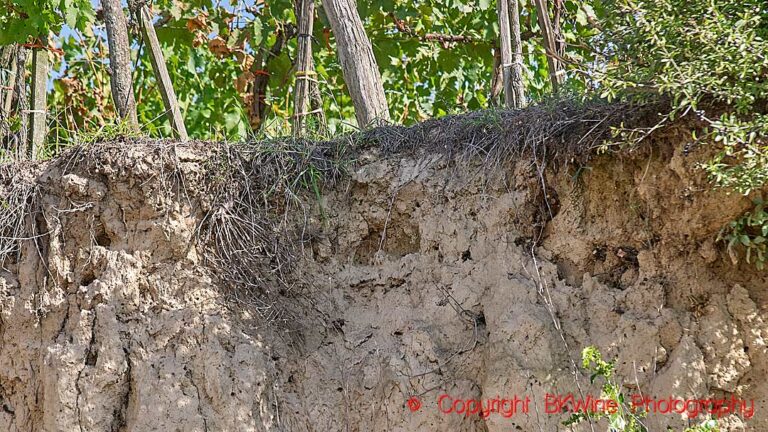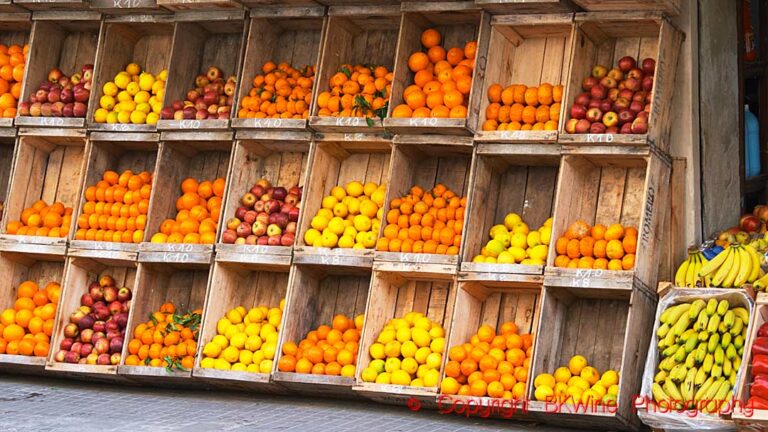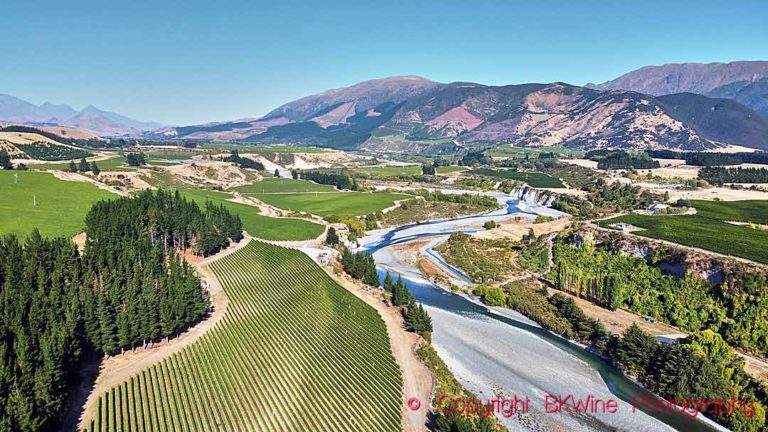

 Aroma wines and structure wines
Aroma wines and structure wines
Sometimes a wine has a very small nose, does not smell much. We sometimes say a discreet or shy nose. Is that always bad? There is so much talk about smelling the wine, swirling your glass so that the aromas open up, dipping your nose deep into in the glass. One can easily get the impression that it is only the nose that counts.
But is that really the case?
Not really. When you drink the wine with food, it is the taste that is most important. Which is, of course, partly based on the nose. But it is important to remember, one should not judge a white wine by its nose (aroma, smell, bouquet,…) alone.
We often divide wines into two different categories: aroma wines and structure wines.
Structure wines are a group of (mostly white) wines that have a surprisingly small nose but which we still think are of the highest quality.
Their opposite is aroma wines.
The aroma wines provide more instant satisfaction. They are often made from aromatic grape varieties such as sauvignon blanc, riesling, muscat and others. They have an intense nose, but often a fairly light body. The taste can also be intensely aromatic but often quite short. These are wines that can often be easily recognized. You immediately get a lot of taste sensations, without much effort so to speak.
For example, think of wines such as Sancerre, Alsace and Mosel. Or albariño from Spain, torrontes from Argentina, chenin blanc from South Africa, riesling and sauvignon blanc from New Zealand. White wines from Etna. Many arneis from Piedmont. And so on.
Structure wines, on the other hand, are just the opposite. The nose is “discreet” (quite small) but the taste is full, sometimes fat. There is a mouthfeel, a “structure”, maybe some tannins or austerity, and the taste stays with you for a long time. The taste may not be as intense and readily available as for the aroma wines, but it is more extensive and longer. These wines demand more of your attention. Don’t dismiss them just because the nose is small and the character not immediately apparent. These wines are a bit more “intellectual”, wines that encourage some reflection.
Structure wines can be wines from grapes such as grenache blanc, maccabeu, marsanne, vermentino… Many white wines from the Languedoc and the Rhône Valley have this style. And also some chardonnay wines (though not Chablis). Or Bordeaux with some barrel ageing and a good dose of sémillon. White wines from Rioja. Etcetera. Many older white wines develop in this direction as well.
What do you think about our categorisation into aroma wines and structure wines? Send us a comment!
Time for a wine travel reminder!
You still have the chance to book yourself on a wonderful wine tour. There are places left on some of the tours. See the program next to this text.
Chile-Argentina is fully booked. Instead, come to New Zealand, the trip that had everyone amazed and dazzled this year when we did it for the first time. Or to South Africa, this wonderfully beautiful and friendly wine country. Wouldn’t it be nice to escape the winter for a few weeks?
Travel to the world’s wine regions with the wine experts and the wine tour specialist.
By the way, you can read in the Brief about that we just won OIV’s (International Organization for Vine and Wine) award for our latest book, on the Languedoc-Roussillon. You can’t get better companions on your wine tour than BKWine.
Enjoy the Brief,
Britt & Per
PS: Recommend to your friends to read the Brief !
What’s on at BKWine Tours
2019
- Champagne, September 11-15, 2019
- Bordeaux, October 2-6, 2019
2020
- Chile and Argentina, January 20 – February 2, 2020
- South Africa, February 15-23, 2020
- New Zealand, March 9-24, 2020
- More to come
For more information please contact us on email or on phone (we’re on French time), or go to our wine travel site on www.bkwinetours.com!
We also make custom designed wine tours – on-demand tours for you and a group of friends, for your company (maybe to scout new winegrowers?), for a special event… We can combine winery visits and wine touring with other activities: gastronomic workshops, visit to an oyster farm, truffles hunting, cheese making, and more. More info on the custom designed and bespoke BKWine wine tours and travel here!
Read our book(s)
We have written several wine books, nine at the last count. One of them has been translated to English; the others are (so far) only available in Swedish. This is the one that is available in English: Biodynamic, Organic and Natural Winemaking, Sustainable Viticulture and Viniculture
All our books are on wine, but on different subjects: wines of the Languedoc, wine growing and wine making, the wines of France, Tuscany, Bordeaux, Piedmont, Burgundy, Champagne. Several have won prestigeous prizes and awards. Read more on our wine books.
[box type=”alert” size=”large” style=”rounded” border=”full”]This is just the introduction to the latest issue of the Brief. Subscribe to the BKWine Brief and you will get the whole edition in your mailbox next month.[/box]









2 Responses
It is an interesting aspect how you may divide, or better say, classify some of these wine you describe in your article as aroma wines and structure wines. First of all for me I would like to do these aspect just manly for dry wines. Because if you take bubbling or fortified wines or even semi-dry lie the cabinet or Spätlese at the Mosel you get a littlest confused with these classification. In general I do sometimes also the same like you with these classification. Structure wines are for me manly these ones who shows at the pallet more than just a fruit or also more than some wood reflection. Structure is the complex and altogether play of tannins, aroma, fruit, alcohol and many more of the ingradiances of wine you may smell. And if the winemaker do well, the structure in a wine is more and more complex like in a just to say “fruity” juice (wine) and there aromas. Hoe to see you well in some weeks in Champagne. Olaf
Olaf, totally agree to what you say. And yes, it is mainly about dry wines. (We don’t drink that much sweet or semi-sweet wines.)